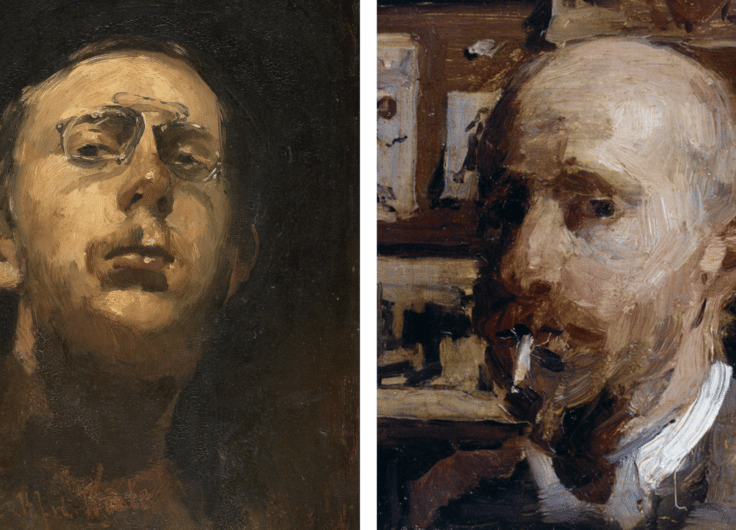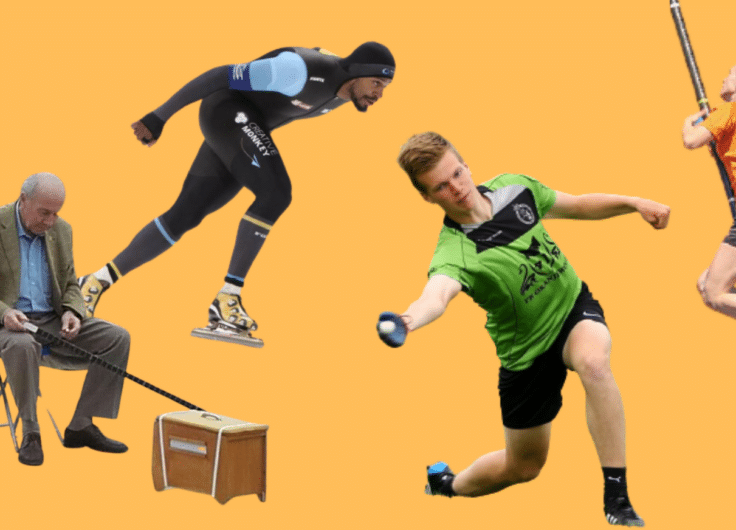Blood or Flowers: Boxing in the Visual Arts
For many outsiders, boxing is a form of violence that should be banned. But connoisseurs and many artists see things differently. There is a never-ending list of filmmakers, writers and visual artists who have been, and indeed continue to be fascinated by the so-called noble art. Internationally renowned artists including Picasso, Schiele, Warhol and Basquiat have virtuously incorporated their fascination for the ring into their oeuvre. Their example was also followed in Belgium and the Netherlands.
In an interview for the book The Artistic Uppercut, Museum Director Jan Hoet, who died in 2014, said that ‘boxing is one of the most gruesome sports when practised barbarically, but one of the most beautiful when style and intelligence prevail. Then it is art.’ The flamboyant art legend and amateur boxer saw the noble art as ‘a metaphor for life with all its beauty, fragility, despair and transience.’ This view was shared by literary greats such as Norman Mailer, Maurice Maeterlinck and Hugo Claus, for whom ‘the combination of grace, intelligence, nobility, cruelty, cowardice – all of which can arise in thirty seconds of boxing – was worth more than a literary event.’
Museum Director Jan Hoet saw boxing as 'a metaphor for life with all its beauty, fragility, despair and transience’
Hoet considered boxing a greatly underestimated artistic activity. ‘Just like art, boxing is all about the sense of space, rhythm, character, concentration, and reflexes. A champion fighter has to see through their opponent quickly, anticipating their movements. The same qualities come in handy for a museum curator. In art you have to be able to accurately discern between authenticity and posturing; to feel where authenticity ends, and calculation begins; to know whether art is of primary or only secondary importance to someone. Psychology and intuition play a major role in art, just as it does in boxing.’
Hoet started boxing himself in his student days. He boxed intensively for a year, and then on an occasional basis. When he became the artistic coordinator of the contemporary art exhibition Documenta IX in 1992, he chose the vulnerability of the body as its theme. For Hoet, this included a boxing match, just like during Documenta V, where the German artist Joseph Beuys boxed against the young sculptor Abraham David Christian ‘for more civil freedoms and direct democracy’.
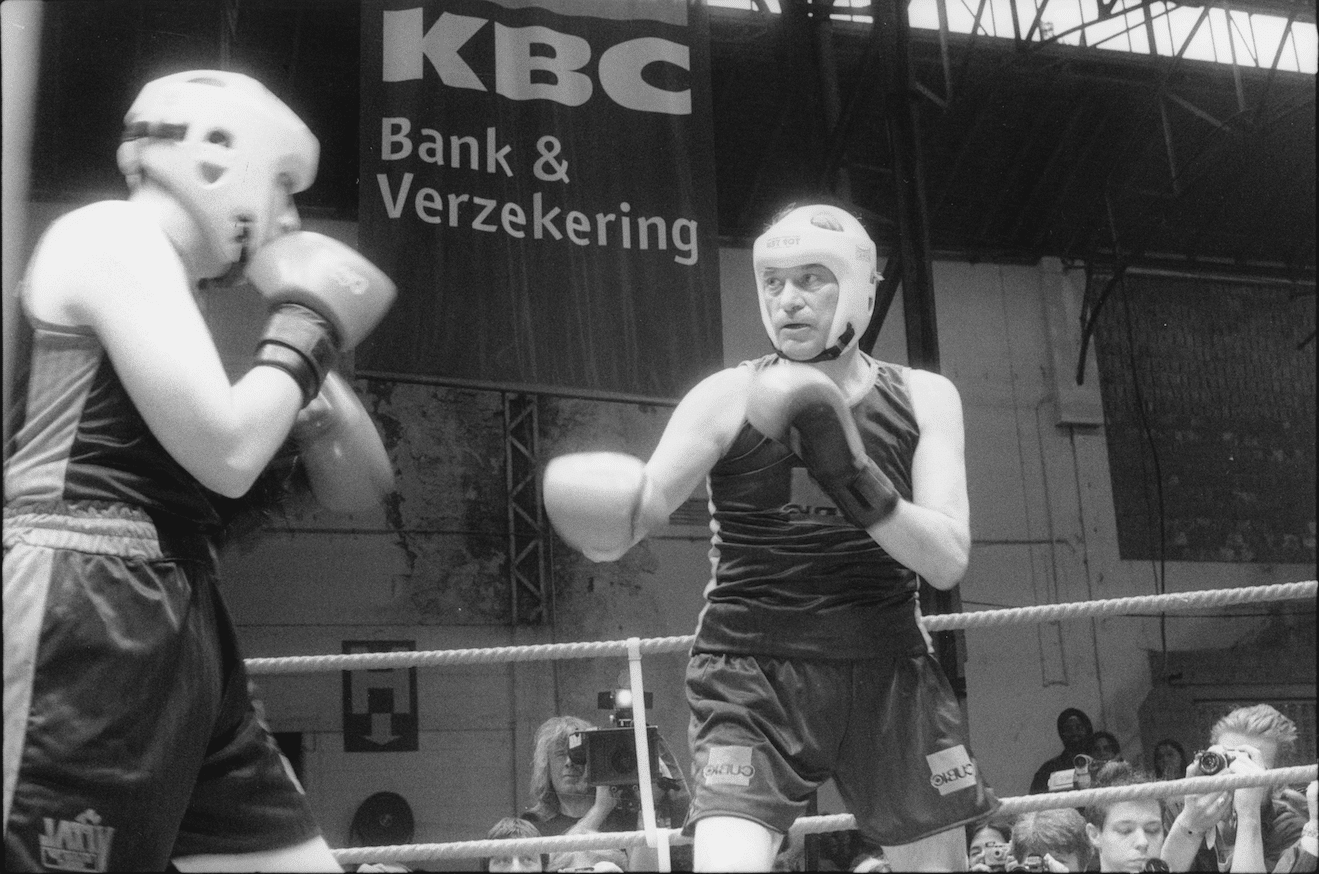 American artist Dennis Bellone and Museum Director Jan Hoet box at the opening of S.M.A.K. in Ghent, in 1999
American artist Dennis Bellone and Museum Director Jan Hoet box at the opening of S.M.A.K. in Ghent, in 1999© Dirk Pauwels / S.M.A.K.
Hoet, who was never afraid of going for the impossible, wanted to invite Mohammed Ali and Mike Tyson as crowd pullers for Documenta IX. His proposal was quickly dismissed as unrealistic, and in the end, it was two lesser gods, ex-boxers Henry Maske and Axel Schulz who fought each other.
When the Municipal Museum of Contemporary Art S.M.A.K. opened in Ghent in 1999, with Jan Hoet as its director, he entered the ring at the age of 63, fighting against 37-year-old American artist Dennis Bellone. Bellone was a technically stronger fighter, but Hoet was tireless. Referee and ex-boxer Freddy De Kerpel had to intervene repeatedly to protect Bellone and the match ended undecided. ‘A victory for art’, Hoet thought. During his time at S.M.A.K. he would stretch his muscles every day with a 15-minute sparring session with a red punchbag. Two pairs of boxing gloves hung on the wall in his office, ‘one pair from when I was a child, and one pair from the time of my big hands.’
Physical painting
Even decades before the arrival of Mohammed Ali, boxing was one of the most popular sports in the world. The action in the ring and the athletic perfection of the toned boxer’s body inspired the art world. In the wake of American artists such as Thomas Eakins and George Bellows, interest in boxing amongst European artists grew. This interest grew alongside the thriving international reputation of fighters like Georges Carpentier in France, Gustave Roth in Belgium, and Bep van Klaveren in the Netherlands, who were not only depicted on canvas and paper, but were also given their own statues.
The most diverse styles flourished in Paris during the Belle Époque. George Braque, a fervent fan of boxing and indeed a fighter himself, considered Cubism ‘physical painting’. Picasso, Braque, Derain and De Vlaminck not only went to boxing matches – they were also in the ring themselves. The art of perfect movement, the flying punch, and the quick reflex – boxing brought together all the elements that inspired the avant-garde artists.
Boxing brought together all the elements that inspired the avant-garde artists
During the interwar period, a love for black culture grew in the City of Lights, something which was picked up by Dutch and Belgian artists too. Black became a symbol of modern life. Jazz music became popular and Dutch artists residing in Paris painted black heroes, including famous boxers and dancers such as Josephine Baker. The black body was celebrated and revered as an exotic attraction.
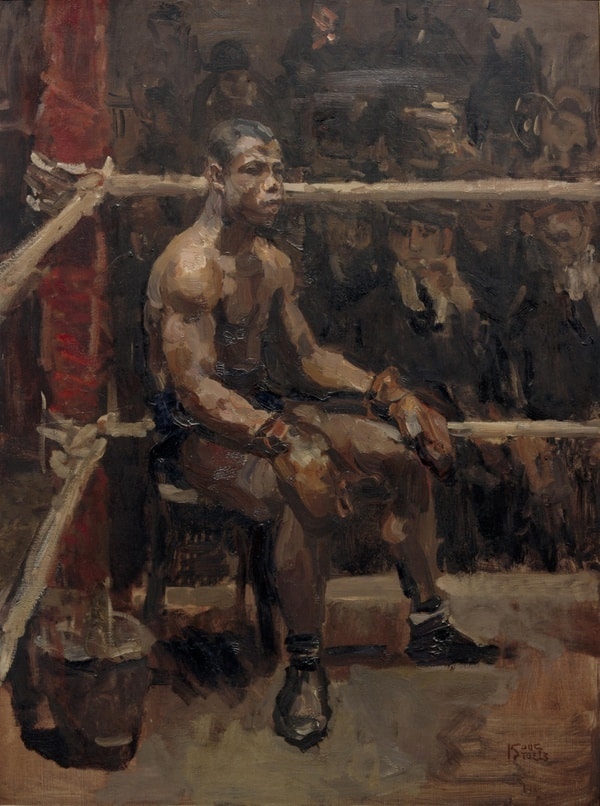 Isaac Israëls, Portrait of a Black Boxer, 1914-1915, Centraal Museum, Utrecht
Isaac Israëls, Portrait of a Black Boxer, 1914-1915, Centraal Museum, Utrecht© Centraal Museum, Utrecht
Isaac Israëls (1865-1934) was the first of the Dutch painters to do this. As a young man, he had his studio on the Boulevard de Clichy. Among other things, he painted circus artists, fairground acrobats and boxers. Between 1914 and 1915 he produced three oil paintings of the Senegalese world champion light heavyweight, Battling Siki: one with the fighter leaning against the ropes, one with a white opponent, and one sat in his corner of the ring during a break. The latter work, Negro Boxer, is the best known. The vague contours of the audience are visible in the background. Everything is rendered with black and brown brushstrokes. The boxer’s body and face are a patchwork of light and dark brown tones ranging from yellow-brown to red-brown. The canvas captures a brief moment of calm, after and before an explosion of energy. Detached, the champion fighter seems to be waiting for the match to continue, although it’s doubtful whether this was a real fight. Art historian Anna Wagner suspects that Israëls rented a space in order to paint his boxers, inviting an audience to come and watch.
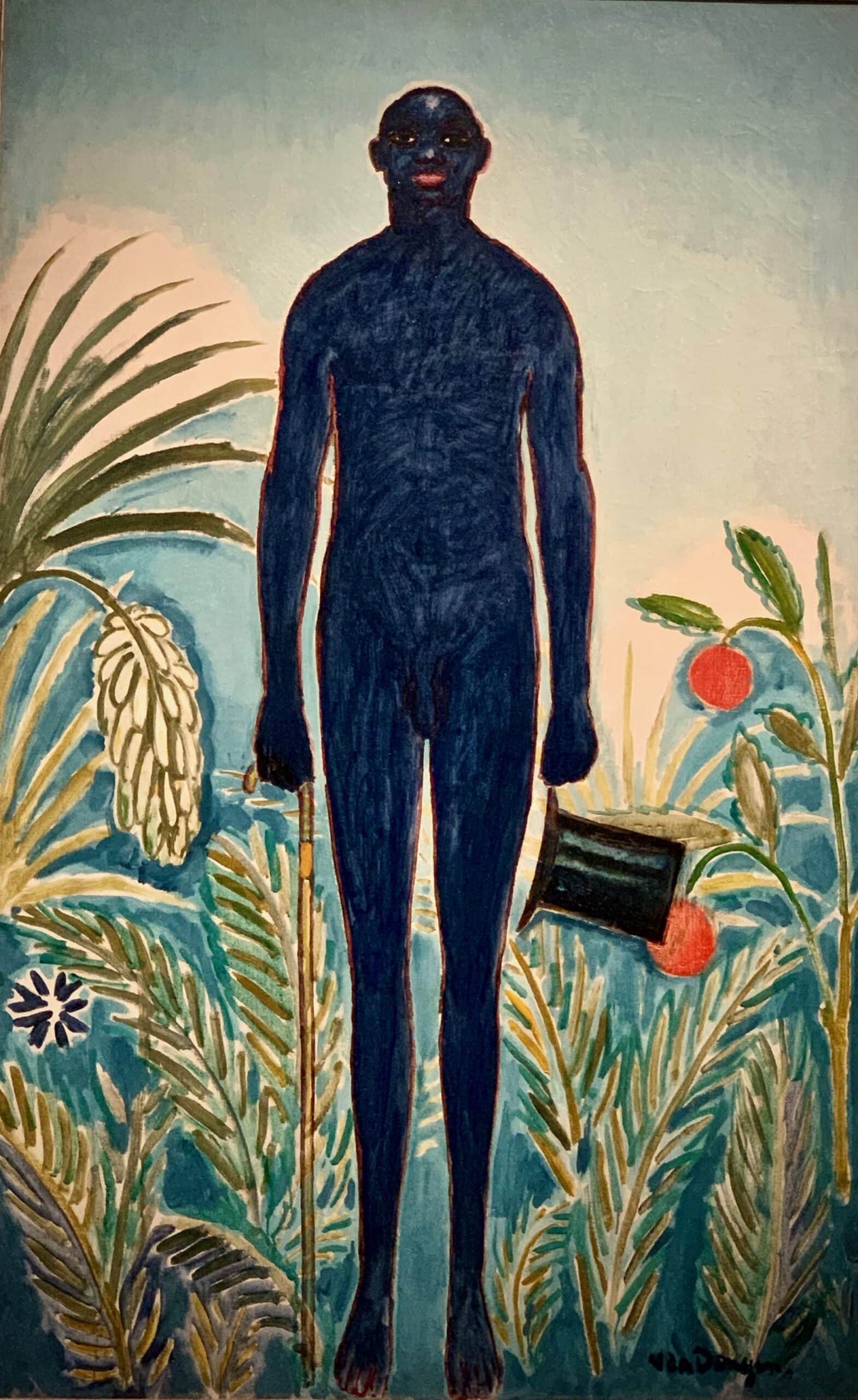 Kees van Dongen, The Morning Walk, Portrait of Jack Johnson, 1914, Prince's Palace, Monaco
Kees van Dongen, The Morning Walk, Portrait of Jack Johnson, 1914, Prince's Palace, Monaco© Prince's Palace, Monaco
In addition to Israëls, Jan Sluyters (1881-1957) and Kees van Dongen (1877-1968) also made portraits of boxers. What Andy Warhol was to New York, Kees van Dongen was to Paris, from the 1920s onwards: a society artist who gave the French capital more colour. Van Dongen shared a studio in Paris with Picasso for a while and was known for his contemporary use of colour and paint and his lifestyle. His studio parties were attended by movie stars, famous politicians, sportsmen and artists. He regularly organised boxing matches too. As a chronicler of fashionable society, he portrayed female acrobats, starlets, fashion models, mistresses, jazz musicians and world-famous boxers such as Jack Johnson, who was the Mohammed Ali of his time. The portrait of Johnson is unfortunately not one of his most successful works.
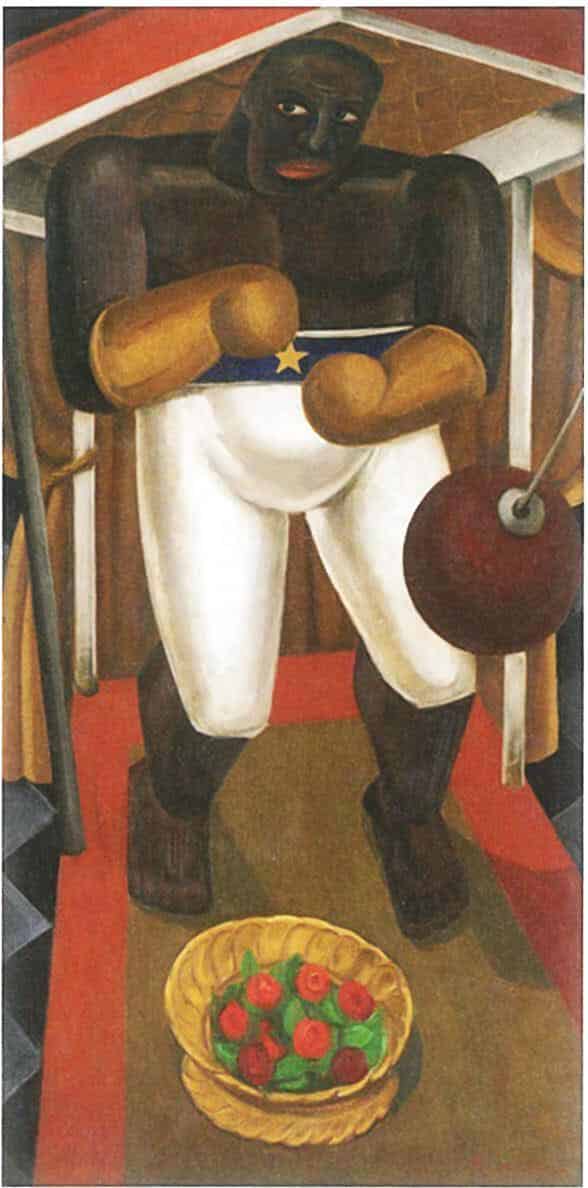 Prosper De Troyer, Sicky the Boxer, 1926, private collection
Prosper De Troyer, Sicky the Boxer, 1926, private collectionJan Sluijters (1881-1957) began his painting career as a headstrong rebel and ended up as an establishment favourite. He was mainly known as a painter of women, often in an advanced state of undress. His stay in Paris in 1906 was of great significance to him. Before he came to his own style, he was influenced by Fauvism and Cubism and the work of André Derain and Maurice de Vlaminck made a great impression on him. They became friends and he regularly attended boxing galas with them. In addition to black women, Sluijters considered black boxers the ideal nude models. Jean Cocteau refers to them as ‘ebony adonisses’.
One of the most impressive portraits of Battling Siki is by the Flemish artist Prosper De Troyer (1880-1961). In barely twenty years, De Troyer had evolved from post-impressionism via futurism, cubism, and geometric abstraction, to a personal expressionism. A typical example of this is his canvas Sicky the Bokser from 1922, a monumental piece of work in which an angular, broad-shouldered fighter in an old-fashioned uniform (long trousers) is bombarding a punchbag with a menacing look. Siki is portrayed as a black fighting machine, but a delicately painted flower basket stands at his feet.
Between art and kitsch
Modern art offered less and less room for figuration. What used to be condescendingly referred to as ‘craft’ was suddenly recognised as a legitimate form of artistic expression. All materials lent themselves to making works of art: acrylic, feathers, rusty iron, felt, grease, wool, even human blood or the testicles of an elephant. Those who didn’t follow the trends were dismissed by the critics as hopelessly kitschy or unfashionable. After World War II, figurative depictions of boxers became scarce. If they were there at all, they were usually categorised under the heading home crafts. An exception to this was Kees van Bohemen (1928-1985), one of the most accomplished Dutch painters of the twentieth century, known for his large colourful canvases of women, athletes, and exotic motifs. The expressive way in which he used paint was paramount for him, whereas the choice of subject matter was less important. ‘I don’t want my work to be anecdotal, I don’t want to tell little stories in paint’, he said.
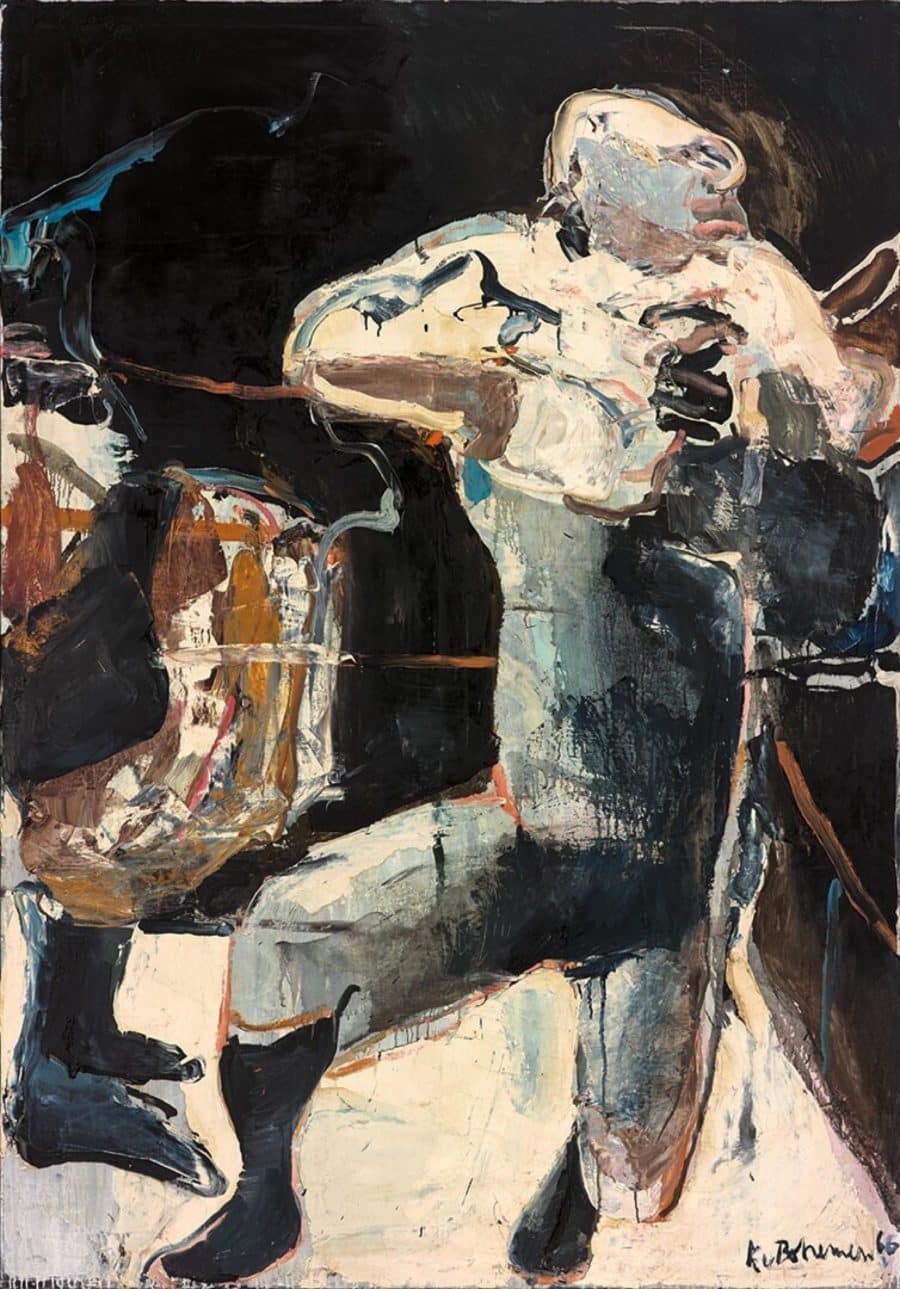 Kees van Bohemen, 14th Round, 1966, Museum Boijmans van Beuningen, Rotterdam
Kees van Bohemen, 14th Round, 1966, Museum Boijmans van Beuningen, Rotterdam© Museum Boijmans van Beuningen, Rotterdam
At the age of 24, Van Bohemen received a stipend with which he travelled to Paris. He stayed there for five years and made friends with painters from the Cobra group including Karel Appel, Corneille and Bram Bogart. He shared a studio with Corneille and in the late 1950s he joined the Nederlandse Informele Groep (Dutch Informal Group), which also included amateur boxer Armando, Jan Schoonhoven and Jan Henderikse. His paintings of horse racing, car racing, cycling and boxing came from influences during his time in America, where he met the abstract expressionist Jackson Pollock. He was awarded the Wedgwood Prize for his Homage to Floyd Patterson (1966), which became one of his most successful paintings of boxers. Van Bohemen died of a heart attack at the age of fifty-six.
The jolt of muscles and intellect
‘Les grands boxeurs ont la rage méthodique. Ou plutôt il ne s’agit pas de rage. La foudre superbe’ (Great boxers have a methodical rage. Or rather it’s not about rage. The sublime thunderbolt), wrote the French poet Michel Deguy. That ‘rage méthodique’, and the ‘foudre superbe’ can be found in the paintings of Fleming Sam Dillemans (b. 1965). He is one of the few who depicts the combination of power, beauty, violence, and tragedy in the noble art on canvas. Unlike most of his colleagues who focus on the aesthetics of the perfectly toned body, Dillemans also pays attention to the barbaric aspects of the sport, just like many filmmakers and writers do.
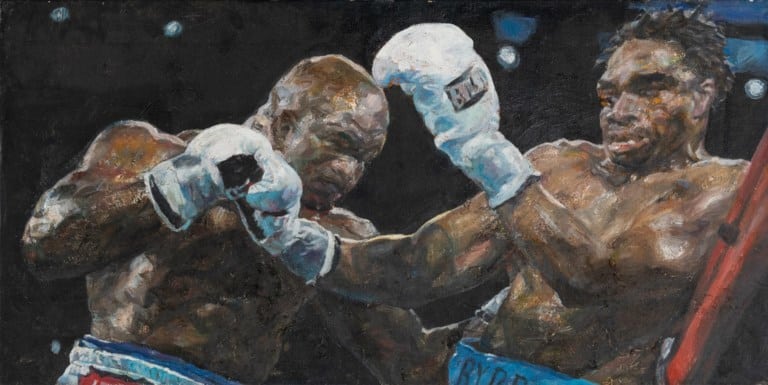 Sam Dillemans, Fight, 2006
Sam Dillemans, Fight, 2006© Sam Dillemans
In his youth, Dillemans was a keen cyclist and footballer, and his love for boxing began in the 1970s. ‘Thanks to the fights and the charisma of Mohammed Ali.’ More than twenty years ago he started to box himself. ‘I was 37 at the time, and I was an avid smoker. I went through purgatory. I couldn’t hide. In the ring, I learned to die. I was stressed. Who wasn’t? Even Tyson was afraid. All the black boxers turned white when he looked at them…’ Nowadays, the Raging Bull of Belgian painting keeps himself in shape with tightrope walking.
Unlike most of his colleagues, Dillemans also pays attention to the barbaric aspects of the sport
Because Dillemans has fought himself, he is able to perfectly portray the power of each movement and the drama of a fight using his own experiences. ‘Just like a boxer – even if he is naturally talented – has to practice every punch meticulously and learn to master every mechanism before he can successfully transfer what he has learned in the ring – so must a painter study technique. A boxer who neglects his technique is beaten. It works the same way in art.’
Over the course of his more than 40-year career, Dillemans has immortalised hundreds of athletes, scientists, artists, musicians and writers. The key is always his admiration for exceptional people from the most diverse of areas. The way in which he portrays champion fighters under the harsh spotlight in the ring, shows the noble art has nothing playful, nothing graceful. ‘It’s not so much about pictures or stories as it’s about form and emotion’, he says. What counts is the jolt of muscles and intellect, the clash of bodies. When I paint bodies, I get closer to my heart, and I always try to paint as close to the heart as possible.’ Under Dillemans’ brushwork, the ring becomes a figure of speech for the dramas that boxers experience over the course of their careers. The rough strokes and the lighting evoke the bloody or blooming atmosphere of the battle scene.
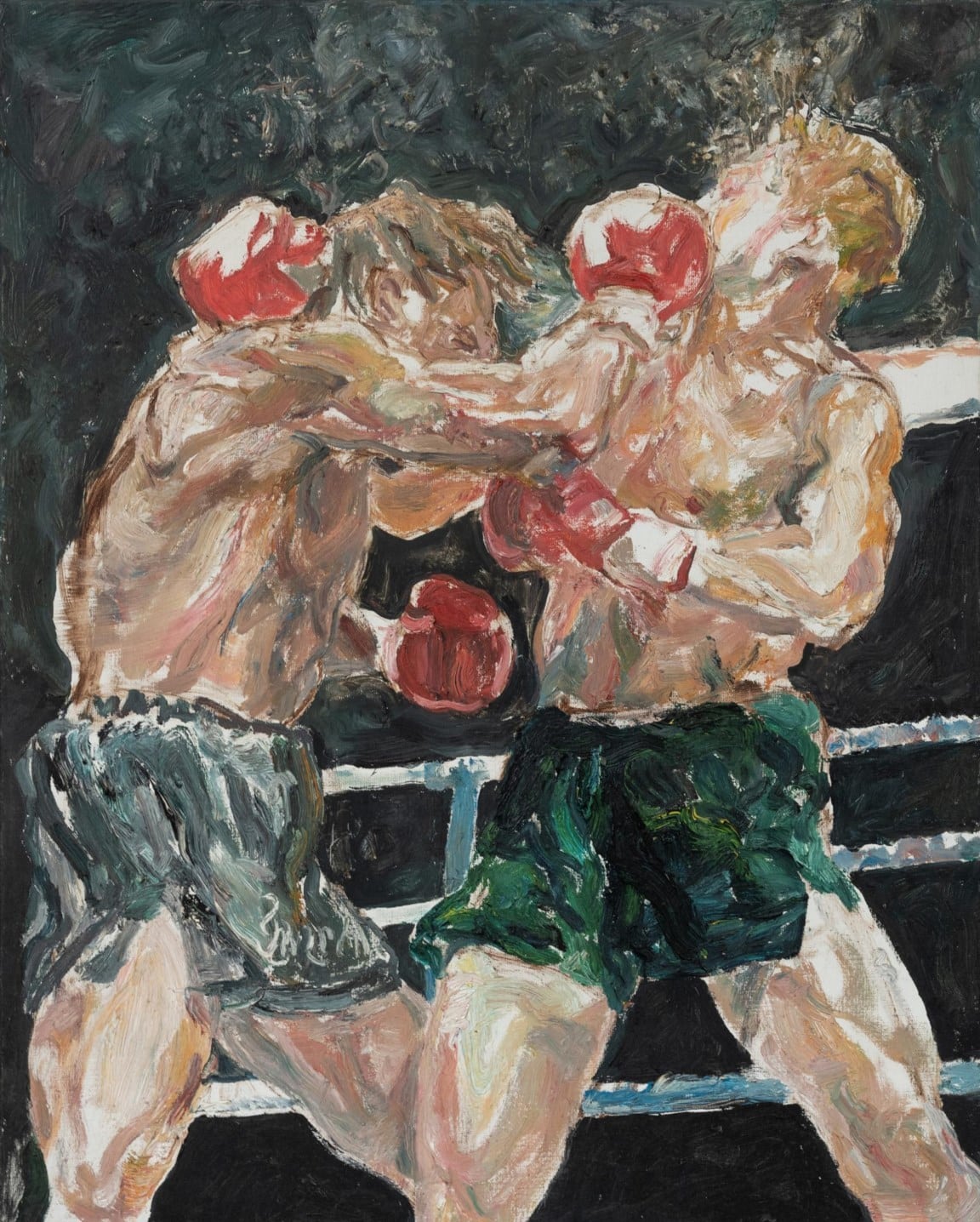 Sam Dillemans, Fight, 2003
Sam Dillemans, Fight, 2003© Sam Dillemans
The champion fighters on some of Dillemans’ canvases are no longer recognisable. All that remains to be seen is fighting torsos blasting each other with ‘punches that destroy city walls’ (copyright Mike Tyson), dissolving into an abstract blur. The layers of colour are applied with an energy that overwhelms the surface of the canvas. Details in the anatomy are accentuated, as the artist references his indebtedness to the old masters. ‘Look at Rubens and The Descent from the Cross’, he says. ‘Look at how he works magic on muscles and tendons. Christ was just an alibi for him. Those old masters painted muscular bodies to showcase their knowledge of anatomy. In my work, the figures wear gloves and shorts, but that’s the only difference. Ultimately, it is about portraying all the facets of the body as accurately as possible. And no other sport lends itself better for that than boxing.’
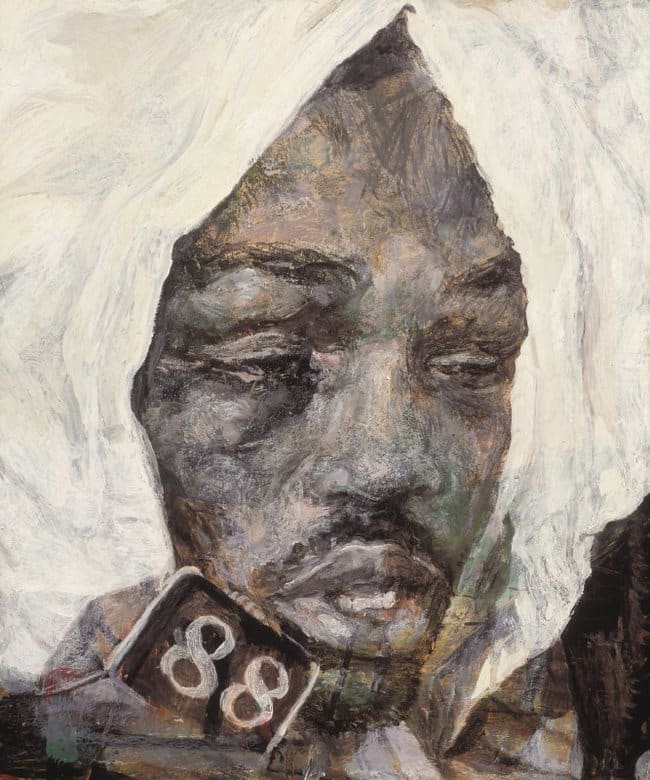 Sam Dillemans, Joe Frazier, 2003
Sam Dillemans, Joe Frazier, 2003Sometimes pain and disillusionment burst out from the paint, like in the portrait of Joe Frazier after the Thrilla in Manila fight against Mohammed Ali, or the painting of Floyd Patterson after his defeat against Sonny Liston. Snapshots of ravaged, humiliated boxers with faces like maps of blood, bruises and lumps. In the documentary that Sam De Graeve and Luc Lemaître made about him, Dillemans emphasises that he doesn’t want to make nice paintings. ‘I want to make something that is crushing, devastating, something that even throws me. Sometimes I get close.’


